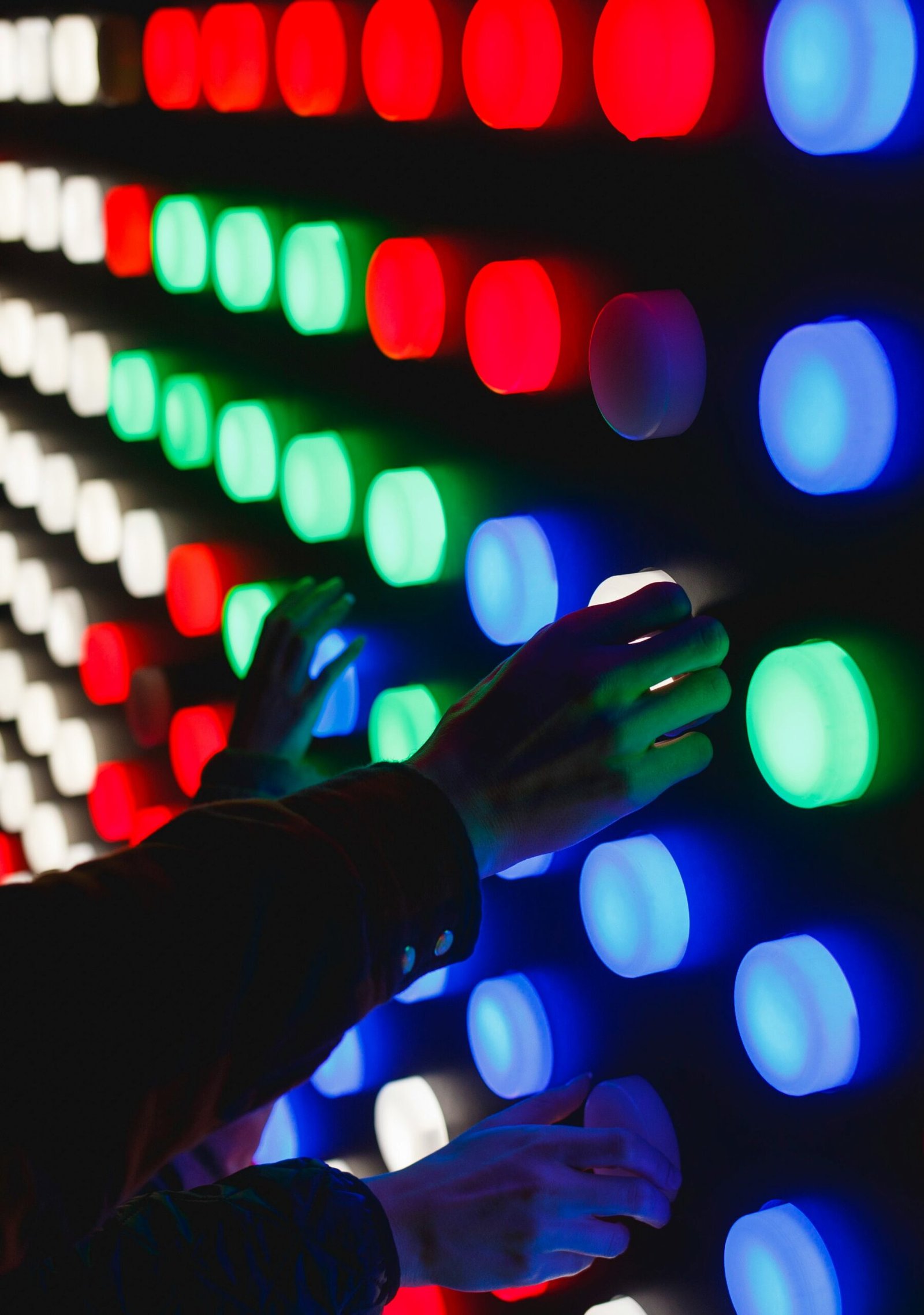
One of the emerging trends in the future of dubbing is the use of artificial intelligence (AI) and machine learning. AI technology is being developed to automatically generate synchronized lip movements for dubbed content. This eliminates the need for manual lip-syncing, which can be time-consuming and costly. With AI, dubbing studios can produce high-quality dubbed content more efficiently and at a lower cost.
Another trend that is shaping the future of dubbing is the rise of voice cloning technology. Voice cloning allows dubbing studios to replicate the voices of actors and actresses, making it easier to dub content with consistency. This technology can also be used to bring back the voices of deceased actors, allowing them to continue their roles in new films or television shows.
In addition to technological advancements, the future of dubbing is also being influenced by the changing preferences of audiences. With the rise of streaming platforms and global content distribution, viewers now have access to a wide range of international films and television shows. As a result, there is a growing demand for high-quality dubbing that accurately captures the nuances of the original performances.
Furthermore, the future of dubbing is also being shaped by the need for cultural adaptation. As content becomes more globalized, dubbing studios are recognizing the importance of adapting dialogue to suit the cultural context of different regions. This includes not only translating the language but also adjusting the dialogue to reflect local customs, idioms, and humor.
Overall, the future of dubbing is bright and exciting. With advancements in technology and a growing demand for high-quality dubbed content, dubbing studios are exploring new ways to enhance the viewer experience. Whether it’s through AI-generated lip-syncing, voice cloning, or cultural adaptation, the future of dubbing is sure to revolutionize the way we enjoy international films and television shows.
1. Artificial Intelligence in Dubbing
Artificial Intelligence (AI) has made significant advancements in recent years, and it is now being utilized in various industries, including dubbing. AI-powered voice synthesis technology can generate high-quality, natural-sounding voices that closely resemble human voices. This technology has the potential to revolutionize the dubbing industry by reducing the time and cost involved in the dubbing process.
With AI, dubbing studios can create voice actors’ digital replicas and use them to dub content in different languages. This eliminates the need for hiring and coordinating multiple voice actors for each language. AI can also analyze the lip movements of the original actors and synchronize the dubbed dialogue accordingly, resulting in a more seamless viewing experience.
Furthermore, AI can enhance the overall quality of the dubbing process. It can analyze the emotions and expressions of the original actors and replicate them in the dubbed version, ensuring that the essence of the performance is not lost in translation. This level of accuracy and attention to detail is crucial in maintaining the integrity of the original content and providing an authentic viewing experience for audiences around the world.
In addition to improving the dubbing process, AI can also assist in the localization of content. Localization involves adapting a piece of content to suit the cultural and linguistic preferences of a specific region or country. AI algorithms can analyze the cultural nuances and linguistic patterns of different regions, allowing for more accurate and culturally appropriate translations. This ensures that the dubbed version resonates with the target audience and feels like a natural extension of the original content.
Moreover, AI-powered dubbing technology can significantly speed up the production process. Traditional dubbing methods require extensive manual labor, including script adaptation, voice recording, and post-production editing. With AI, these tasks can be automated, allowing for faster turnarounds and more efficient workflows. This not only saves time but also reduces costs, making dubbing more accessible to a wider range of content creators and distributors.
However, it is important to note that while AI has the potential to revolutionize the dubbing industry, it is not without its challenges. One of the main concerns is the ethical implications of using AI to replicate human voices. As AI technology becomes more advanced, there is a risk of voice actors losing job opportunities and the unique qualities they bring to a performance. It is crucial for the industry to find a balance between leveraging AI for efficiency and maintaining the value of human creativity and expression.
In conclusion, AI has the potential to revolutionize the dubbing industry by streamlining the production process, improving the quality of dubbed content, and enhancing localization efforts. While there are ethical considerations to be addressed, the benefits of AI-powered dubbing technology cannot be ignored. As the technology continues to evolve, it will be interesting to see how AI shapes the future of dubbing and enhances the global accessibility of content.
2. Localization and Cultural Sensitivity
As the world becomes more interconnected, the demand for localized content is increasing. Audiences now expect not only accurate translations but also culturally sensitive adaptations of foreign content. Localization goes beyond mere translation and involves adapting the content to suit the cultural nuances, customs, and references of the target audience.
In the future, dubbing studios will need to prioritize cultural sensitivity and hire voice actors who can accurately portray the emotions and nuances of the original performances. This will ensure that the dubbed content resonates with the target audience and maintains the artistic integrity of the original work.
With the rise of streaming platforms and the globalization of media consumption, there is a growing need for high-quality localization services. Companies like Netflix and Amazon Prime Video are expanding their reach to international markets, catering to diverse audiences with a wide range of languages and cultural backgrounds. This presents a unique challenge for dubbing studios, as they must not only provide accurate translations but also ensure that the content is culturally relevant and sensitive.
Cultural sensitivity in localization involves more than just language accuracy. It requires a deep understanding of the target culture, including its customs, traditions, and social norms. For example, a joke that may be funny in one culture could be offensive or lost in translation in another. A skilled localization team must carefully adapt the content, taking into account these cultural nuances, to ensure that the intended message is conveyed appropriately.
Furthermore, cultural sensitivity extends beyond the dialogue alone. It also encompasses visual elements, such as on-screen text, graphics, and even product placement. Localization teams must carefully consider these aspects to avoid any cultural misunderstandings or misinterpretations. This attention to detail is crucial in maintaining the authenticity and integrity of the original work while making it accessible and relatable to a global audience.
In the future, dubbing studios will need to invest in talent that not only possesses exceptional language skills but also a deep understanding of different cultures. Voice actors will play a pivotal role in bringing foreign content to life for new audiences. They will need to embody the emotions, nuances, and cultural subtleties of the original performances, ensuring that the dubbed version resonates with the target audience on an emotional level. This requires a high level of skill and sensitivity, as voice actors must navigate the delicate balance between staying true to the original work and adapting it to suit the target culture.
To meet these demands, dubbing studios may need to establish partnerships with cultural consultants or experts who can provide valuable insights into specific cultural references or customs. This collaboration will help ensure that the localized content is not only accurate but also respectful and engaging for the target audience.
In conclusion, the future of localization and dubbing lies in cultural sensitivity. As the world continues to connect and consume media from different cultures, it is essential to prioritize accurate translations and culturally relevant adaptations. By investing in talent and collaborating with cultural experts, dubbing studios can create a truly immersive and authentic experience for viewers around the world.
3. Interactive Dubbing and Personalization
With the rise of streaming platforms and on-demand content, viewers now have more control over their viewing experience. In the future, dubbing may become more interactive, allowing viewers to choose their preferred language and even customize the voices of the characters.
Imagine watching a film or TV show and being able to select the language and voice of each character. This level of personalization can enhance the viewer’s immersion and make the content more engaging. It can also cater to individuals with specific needs, such as those with hearing impairments who may prefer sign language dubbing or subtitles.
Furthermore, interactive dubbing and personalization could revolutionize the way stories are told. Instead of being limited to the original voice actors, viewers could have the option to choose from a wide range of voices, including celebrities or even their own voice. This would not only add a unique touch to the viewing experience but also allow viewers to connect with the characters on a deeper level.
Moreover, interactive dubbing and personalization could extend beyond just selecting the voices. It could also involve choosing the tone, accent, or even the personality traits of the characters. For example, a viewer could choose to have a character speak with a British accent or give them a more humorous personality. This level of customization would give viewers a sense of ownership over the content and make it feel tailor-made for their preferences.
Additionally, interactive dubbing and personalization could have significant implications for language learning. By allowing viewers to switch between different languages and hear the dialogue spoken by different voice actors, it could provide a valuable tool for language learners. They could practice their listening skills, improve their pronunciation, and immerse themselves in a language in a fun and engaging way.
Overall, the future of interactive dubbing and personalization holds immense potential. It could transform the way we consume content, offering viewers a more personalized and immersive experience. Whether it’s choosing the language, voice, or even the personality of the characters, this level of customization would empower viewers and allow them to truly make the content their own.



